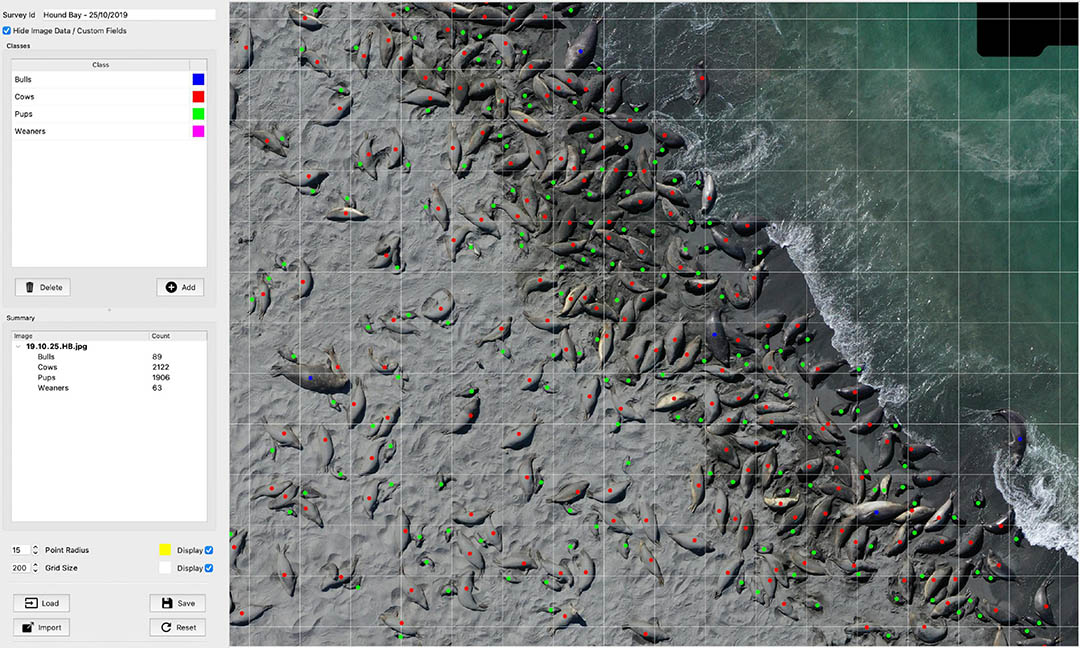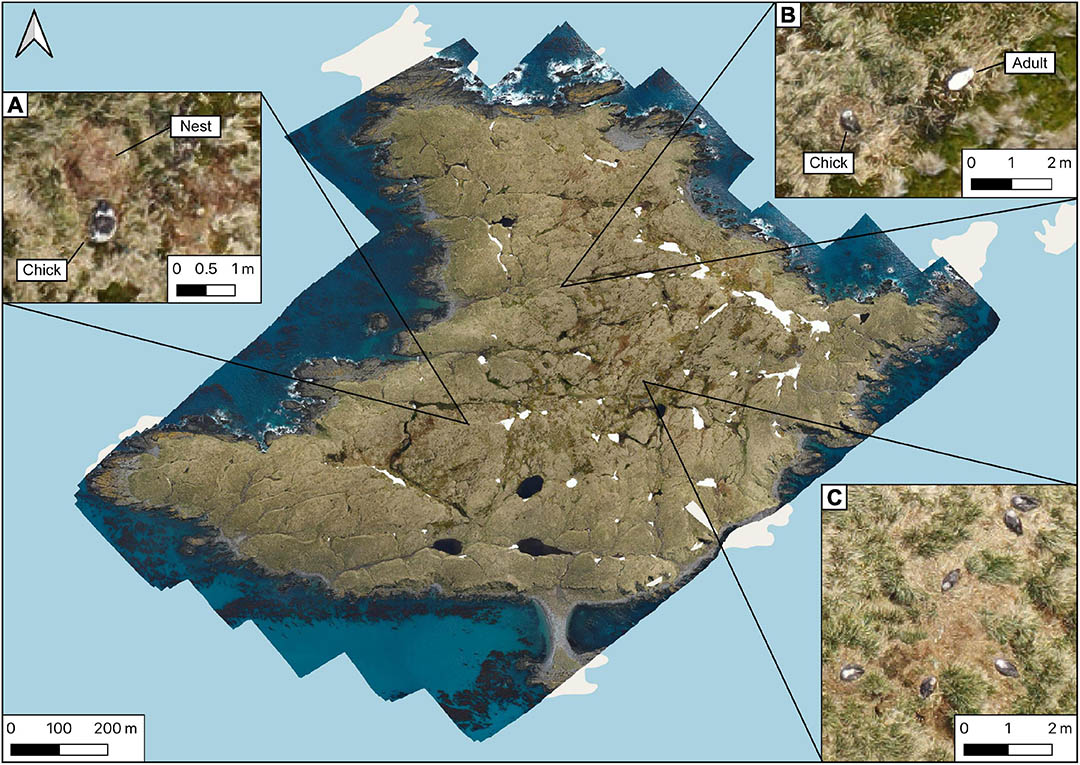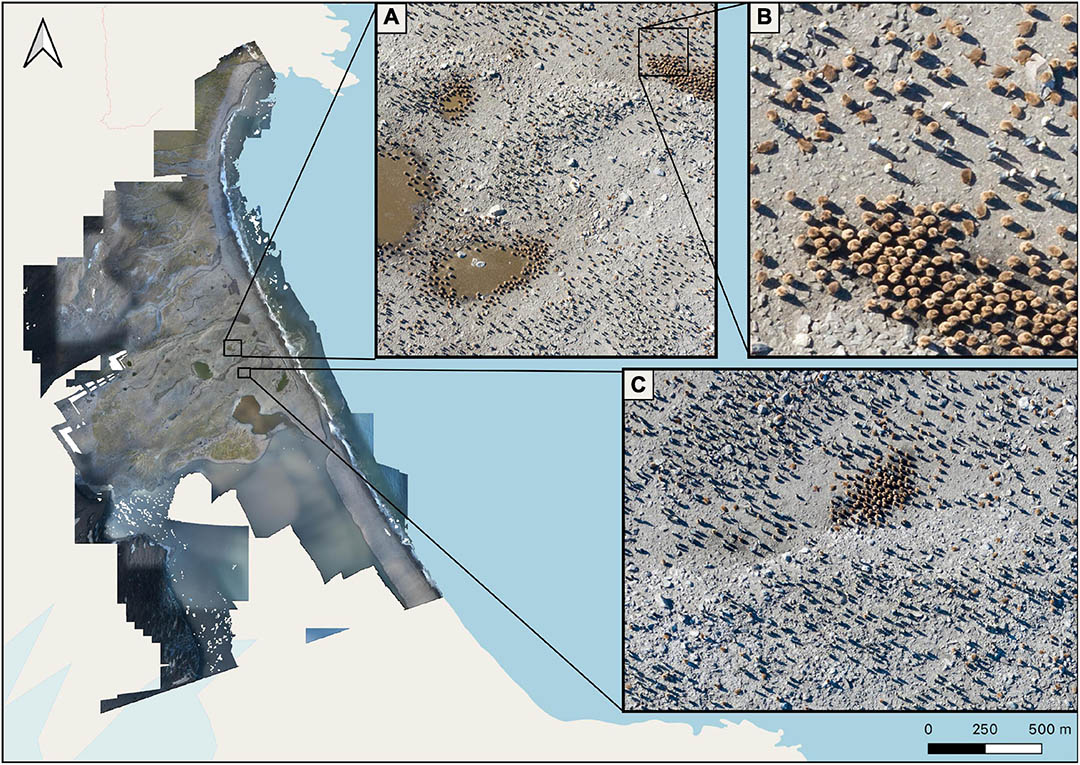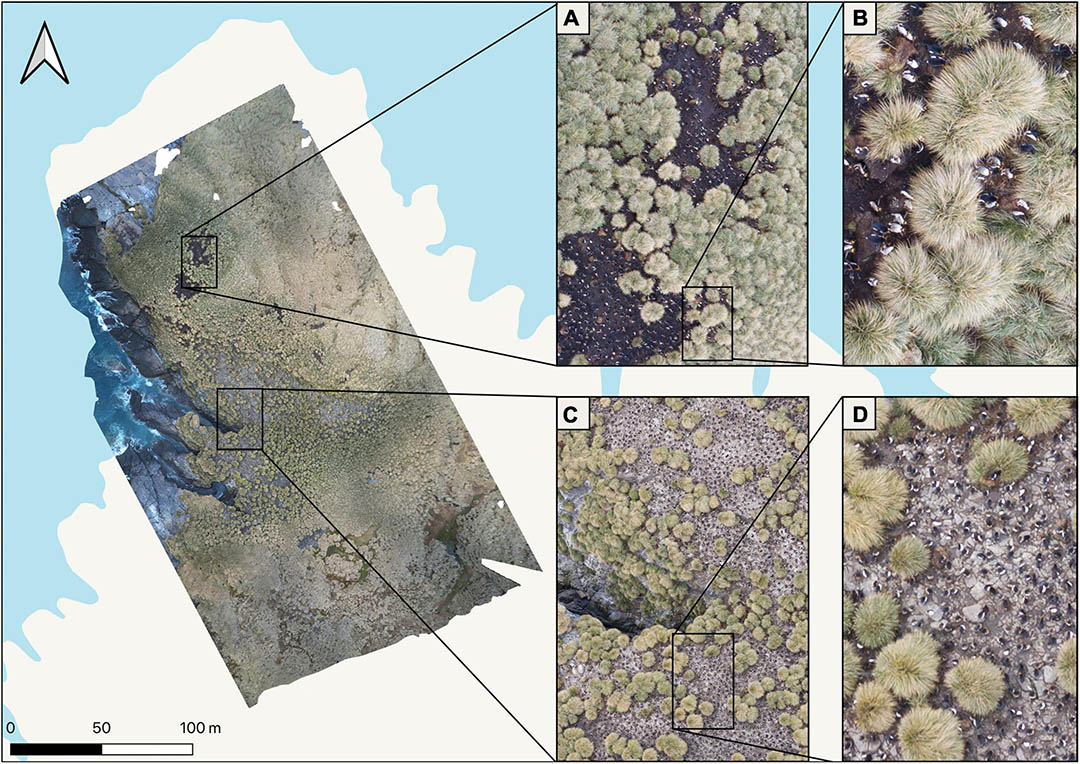
How do you actually count penguins and other wildlife living in extremely remote regions such as the Antarctic continent or surrounding islands? So far, research teams have tried to directly reach the colonies of elephant seals, fur seals, albatrosses and the various penguin species and count the animals on site. However, often the colonies are located in hard-to-reach places or the sometimes high surf does not allow landings. This is why researchers from the British Antarctic Survey, together with colleagues from other institutions on South Georgia and the South Sandwich Islands, have now used camera drones for the first time for the count, which has given them a much more accurate picture of the size of the various colonies.
Research in the remote and inhospitable regions of our planet always means an enormous logistical effort. And when scientists arrive in the study area after a long period of preparation, they may only be able to carry out a fraction of their planned surveys because the prevailing weather conditions are simply too adverse. This was one of the reasons why penguin researchers installed webcams in penguin colonies on the Antarctic continent several years ago, allowing them to conduct convenient counts from the comfort of their warm offices. In addition, as part of the “Penguin Watch” project, they rely on the support of volunteers who count the animals at their home computers, thus contributing to a better understanding of their life history.

The current study, published in Frontiers in Marine Science, was conducted between October 2019 and January 2020 on South Georgia and the South Sandwich Islands, home to millions of penguins, seals and seabirds. Regular surveys of all colonies have not been possible until recently because of the sometimes difficult accessibility, so scientists have focused primarily on the smaller colonies that are easily accessible on foot. With the now highly developed drone technology, the researchers found a tool that allowed them to conduct a safe, accurate and large-scale population survey without disturbing the animals or harming the environment.
“Over the course of a single season, we were able to survey populations of southern elephant seals that haven’t been studied in 25 years, count nesting and fledgling wandering albatross on islands which are infrequently monitored, and collect imagery of some of the largest penguin colonies in the world which will provide us with the most detailed census that we have of these populations.”
John Dickens, zoological field assistant at the British Antarctic Survey and lead author of the study

At a total of six locations, the researchers piloted a commercial quadrocopter over the colonies of penguins, seals and seabirds and took photos every few seconds, which they later stitched together into large aerial images known as orthomosaics. Thanks to the high-resolution images, an accurate and validated count of the animals could be made at the safety of their desks.
Dr Tom Hart, a penguinologist at the University of Oxford and co-author, is excited about their new monitoring method and says: “UAVs (Unoccupied Aerial Vehicles, editor’s note) are fantastic in that they allow us to reach areas safely, even if we only have a short time. If a surf beach is too rough to land on, we can often still fly it. We can therefore count far more colonies in less time. UAV surveys allow us not only to count, but give a position of every nest in that colony. It makes these surveys immensely sensitive to environmental change and more useful into the future.”
Using the drones, the researchers were able to study far more species and colonies than before. In addition, the surveys were more accurate and involved less disturbance to the animals and less risk to the scientists, according to Dr. Martin Collins, South Georgia Science Manager at the British Antarctic Survey and co-author of the study.

On South Georgia, which is home to the world’s largest population of southern elephant seals, Dickens and his team conducted dozens of flights in St. Andrews Bay and Hound Bay, among other places, during the pupping season – the first population count in 25 years. In St Andrews Bay, they recorded more than 6,000 cows, nearly 400 bulls, 5341 nursing cubs and 155 weaned cubs on the beach at the peak of the pupping season on October 25.
Even more impressive are the huge penguin colonies on the archipelago. In St. Andrews Bay alone, an estimated 250,000 pairs of king penguins breed. The scientists have studied a total of four penguin species on South Georgia and the South Sandwich Islands: King penguins, Chinstrap penguins, Adélie penguins and Macaroni penguins. However, counting the animals turns out to be a bit more difficult for the latter three species. Macaroni penguins like to breed among tussock grass, so they are sometimes difficult to see from the air. Therefore, aerial photographs are only useful in colonies that are located in more open countryside. Chinstrap and Adélie penguins often breed close together or even in mixed colonies in the South Sandwich Islands, making it difficult to distinguish the two black-and-white species on aerial photographs taken from altitudes between 50 and 60 meters.
Monitoring of king penguins in St Andrews Bay, on the other hand, has been unproblematic and researchers can clearly distinguish between adults and chicks. The census is still pending, but will provide the exact size of the entire population for the first time when completed.
A – Southern elephant seals in St Andrews Bay on South Georgia from 60m above ground. B – Outflow from a glacial lake that the explorers could not have crossed on foot. Southern elephant seals at King Edward Point, South Georgia from 40m above ground. A – weaned pups, B – cows, pups and bulls on the beach. Wandering albatrosses on Albatross Island from 120m above ground. A – chick close to a nest, B – chick on nest with parent nearby, C – group of giant petrels. King penguins in St. Andrews Bay, South Georgia from 40 – 80m above ground. A – section with adults and chicks, B – chicks, C – chicks surrounded by adults. Macaroni penguins in Rookery Bay, South Georgia from 50 – 70m above ground. A – D: Despite high resolution images, the penguins are partially invisible under the tussock grass. Breeding Chinstrap penguins (A) and Adélie penguins (B) on Thule Island, South Sandwich Islands from 50 – 60m above ground. Distinguishing the two species from the air is extremely difficult.
The aerial photographs taken on islets in the Bay of Isles are also of limited use for counting the Wandering albatrosses, whose population is declining. To avoid disturbing the birds, the drone’s flight altitude has to be higher (120 meters), which makes the images appear heavily pixelated when zooming in. Nevertheless, the researchers were able to identify 143 chicks and 48 adult birds.
The results of the study show that determining the population sizes of various Antarctic and sub-Antarctic species using camera drones is very effective and can be done much more accurately and with less risk than with previous methods. A regular survey of individual numbers is urgently needed in light of the dramatic changes caused by climate change but also by the expansion of krill fisheries, the researchers say.
Future surveys are already planned that will allow scientists to conduct large-scale surveys of these iconic marine animals and understand their responses to the changing climate and environment in this critical ecosystem.
Julia Hager, PolarJournal
More on the subject:











